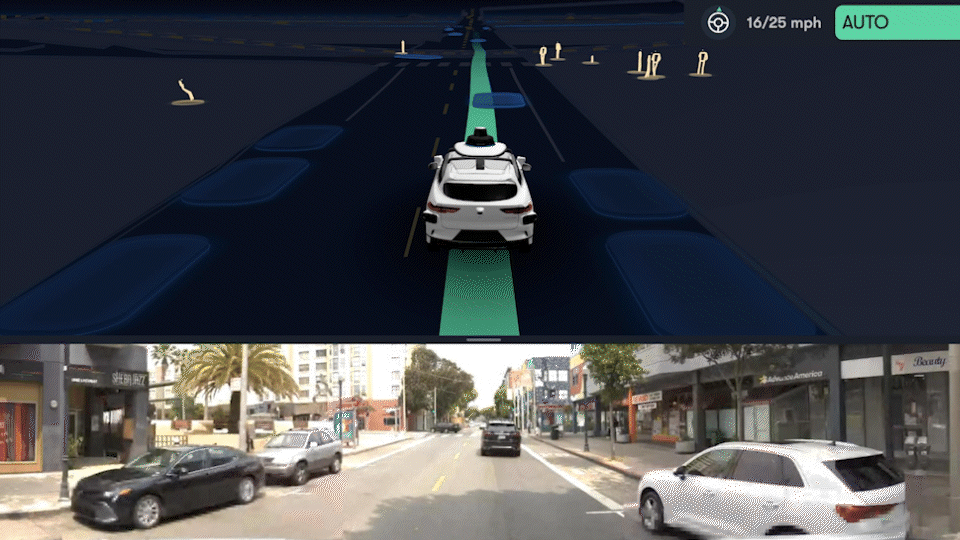I doubt that you are really making this claim seriously but, just for the record, I’ve taken late night rides in the otherwise empty Cruise EVs in San Francisco and have watched them quickly and seamlessly handle multiple double-parked cars.The only "benefit" Waymo and Cruise have is lots of investment in remote *human* monitoring capabilities. They've built lots of software and hardware to have remote human decision makers. Any deviation from the intended path (while on laned roads, not in parking lots) will likely require remote human approval. Waymo and Cruise cars have no real "intelligence" about passing double parked cars (among so many other situations). They simply don't have the breadth of data to deal with these cases, as Tesla does.
One time involved a double-parked car waiting to take the place of another car that was parallel parked just ahead of it and was about to leave (although this was not obvious to me when my Cruise car pulled up to the scene). After a second or two, the Cruise car quickly began steering around the car in the road and then stopped when it sensed that the parallel parked car was about to drive away — which it did. The double-parked car then moved in parallel to the curb to park and the Cruise car simultaneously moved back into the normal lane slot and continued on its way. All of that maneuvering was precise and happened quicker than any human remote controller would have performed. Other, simpler double-parking situations, were immediately recognized and steered-around gracefully without stopping.





/cloudfront-us-east-2.images.arcpublishing.com/reuters/DSPC2KXCBRLPPFNDL3ENULCIKM.jpg)